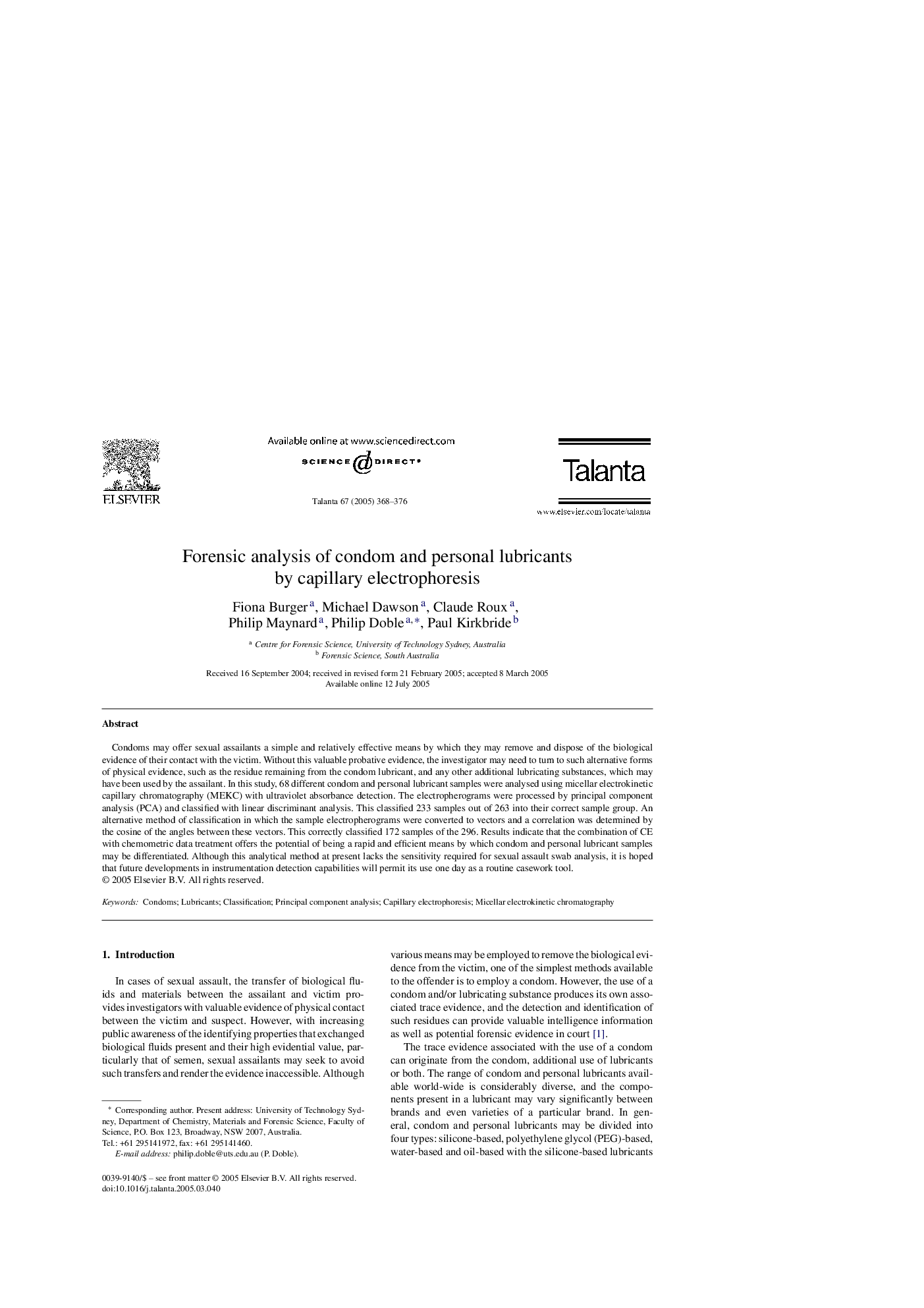| Article ID | Journal | Published Year | Pages | File Type |
|---|---|---|---|---|
| 10560749 | Talanta | 2005 | 9 Pages |
Abstract
Condoms may offer sexual assailants a simple and relatively effective means by which they may remove and dispose of the biological evidence of their contact with the victim. Without this valuable probative evidence, the investigator may need to turn to such alternative forms of physical evidence, such as the residue remaining from the condom lubricant, and any other additional lubricating substances, which may have been used by the assailant. In this study, 68 different condom and personal lubricant samples were analysed using micellar electrokinetic capillary chromatography (MEKC) with ultraviolet absorbance detection. The electropherograms were processed by principal component analysis (PCA) and classified with linear discriminant analysis. This classified 233 samples out of 263 into their correct sample group. An alternative method of classification in which the sample electropherograms were converted to vectors and a correlation was determined by the cosine of the angles between these vectors. This correctly classified 172 samples of the 296. Results indicate that the combination of CE with chemometric data treatment offers the potential of being a rapid and efficient means by which condom and personal lubricant samples may be differentiated. Although this analytical method at present lacks the sensitivity required for sexual assault swab analysis, it is hoped that future developments in instrumentation detection capabilities will permit its use one day as a routine casework tool.
Keywords
Related Topics
Physical Sciences and Engineering
Chemistry
Analytical Chemistry
Authors
Fiona Burger, Michael Dawson, Claude Roux, Philip Maynard, Philip Doble, Paul Kirkbride,
